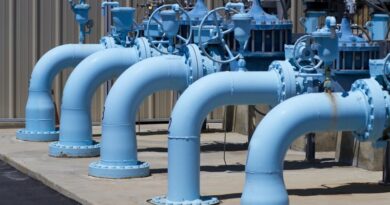Weather-related disasters rise in 50 years, cause $200-mn in economic losses daily

An extreme weather related disaster occurred every day on average over the past 50 years, killing 115 people and causing $202 million in losses daily, a new report from the World Meteorological Organization (WMO) has said, recommending that disaster risk financing mechanisms should be strengthened at national and international levels, especially for least developed countries and small island developing states and territories.
The number of disasters – related to weather, climate or water hazard – has increased by a factor of five over the 50-year period (1970 to 2019) driven by climate change, more extreme weather and improved reporting. But, thanks to improved early warnings and disaster management, the number of deaths decreased almost three-fold.
There were more than 11,000 reported disasters attributed to these hazards globally, with just over 2 million deaths and $3.64 trillion in losses, said the recently launched WMO Atlas of Mortality and Economic Losses from Weather, Climate and Water Extremes (1970–2019).
Although Asia accounts for nearly one third (31 per cent) of all weather, climate and water-related disasters reported globally, India does not figure at all among the top 10 disasters ranked according to both reported deaths and economic losses during the 50-year period.
The report is the most comprehensive review of mortality and economic losses from weather, water and climate extremes to date. From 1970 to 2019, weather, climate and water hazards accounted for 50 per cent of all disasters, 45 per cent of all reported deaths and 74 per cent of all reported economic losses. More than 91 per cent of these deaths occurred in developing countries.
Of the top 10 disasters, the hazards that led to the largest human losses during the period have been droughts (650,000 deaths), storms (577,232 deaths), floods (58,700 deaths) and extreme temperature (55,736 deaths).
However, deaths decreased almost threefold from 1970 to 2019. Death tolls fell from over 50,000 deaths in the 1970s to less than 20,000 in the 2010s. The 1970s and 1980s reported an average of 170 related deaths per day. In the 1990s, that average fell by one third to 90 related deaths per day, then continued to fall in the 2010s to 40 related deaths per day.
With regard to economic losses, the top 10 events include storms ($521 billion) and floods ($115 billion).
During the 50-year period, $202 million dollars in damage occurred on average every day. Economic losses have increased sevenfold from the 1970s to the 2010s. The reported losses from 2010–2019 ($383 million per day on average over the decade) were seven times the amount reported from 1970–1979 ($49 million).
Storms were the most prevalent cause of damage, resulting in the largest economic losses around the globe. It is the sole hazard for which the attributed portion is continually increasing, said the WMO report.
Worldwide, 44 per cent of disasters have been associated with floods (riverine floods 24 per cent, general floods 14 per cent) and 17 per centhave been associated with tropical cyclones.
Tropical cyclones and droughts were the most prevalent hazards with respect to human losses, accounting for 38 per cent and 34 per cent of disaster related deaths from 1970 to 2019, respectively. In terms of economic losses, 38 per centwere associated with tropical cyclones, while different types of floods account for 31 per cent, riverine floods (20 per cent), general floods (8 per cent) and flash floods (3 per cent).
In Asia, 3,454 disasters were recorded from 1970–2019, with 975,622 lives lost and $1.2 trillion in reported economic damages. Asia accounts for nearly one third (31 per cent) of weather-, climate- and water-related disasters reported globally, accounting for nearly half of deaths (47 per cent) and one third (31 per cent) of associated economic losses. Most of these disasters were associated with floods (45 per cent) and storms (36 per cent).
Storms had the highest impacts on life, causing 72 per cent of the lives lost, while floods led to the greatest economic losses (57 per cent). The top 10 recorded disasters in Asia account for 70 per cent (680 837 deaths) of the total lives lost and 22 per cent ($266.62 billion) of economic losses for the region.



